The Fountain of the Four Rivers in Piazza Navona
The fountain located in Piazza Navona, called the Four Rivers, is one of the most beautiful and famous in the world. A masterpiece of Baroque art, it was designed by the immense Gian Lorenzo Bernini on a direct commission from Pope Innocent X in 1651. The fountain dominates the square, one of the most beautiful in the city, and the four famous statues that symbolize the four rivers that represent four different continents. Let’s find out which are these 4 rivers of the 4 great continents of the Earth and all the other curiosities related to this authentic artistic marvel.
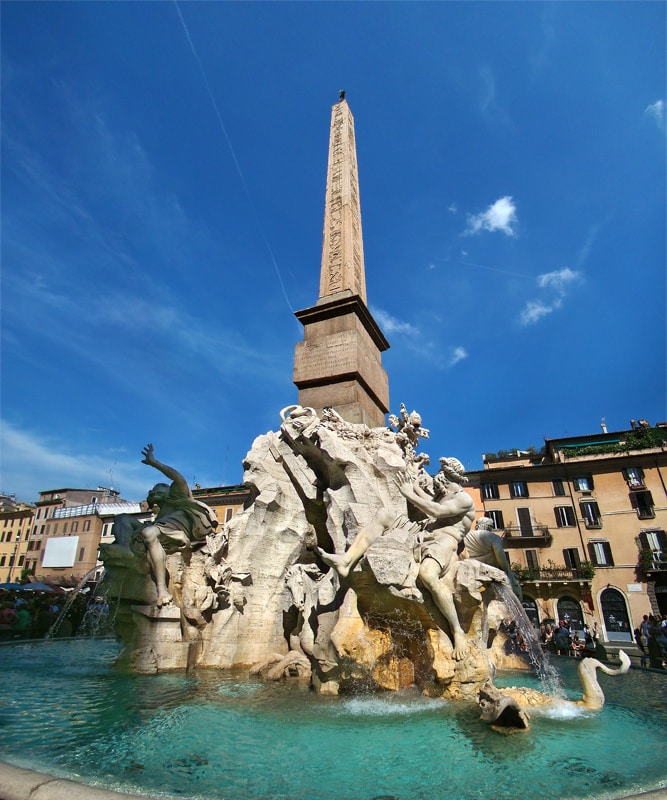
Just think that until 1800 the fountain was used to cool the square on hot August days, closing the drains.
The fountain portrays the four main rivers of the Earth, one for each continent then known: Nile in Africa, Danube in Europe, Rio de la Plata in South America and Ganges in Asia and is dominated by the Agonal obelisk, coming from the circus of Maxentius on the Appia Antica, (the appian way).
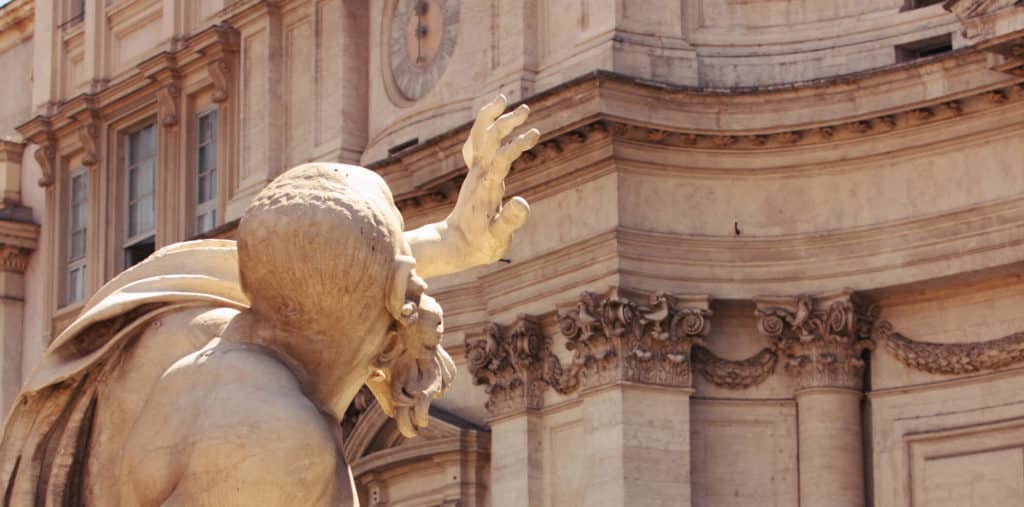
The fountain stands in the center of the square, and consists of a base formed by a large elliptical basin at the level of the road pavement, surmounted by a large marble group on the top of which stands the obelisk, an Egyptian imitation of the Domitian era.
The fountain was commissioned by Pope Innocent X to decorate Piazza Navona, on which the works for the construction of Palazzo Pamphilj were being carried out. In 1647 the pontiff had commissioned Francesco Borromini to design a pipeline that would carry the water of the Aqua Virgo to Piazza Navona and had announced a competition for the design of the fountain in the square. In addition, the pope expressed his desire to recover the obelisk, later called Agonale, which lay in ruins in the circus of Maxentius on the Appia Antica.
The competition was won by Gian Lorenzo Bernini who, to obtain the assignment, created a silver scale model, about one and a half meters high, and gave it to Olimpia Maidalchini, the pontiff’s sister-in-law. Another project was presented by Borromini, which included an obelisk at the base of which four large shells with masks threw water into a tub.
The construction of the work began in 1648 and ended in 1651 under the direction of Bernini.
The costs for the construction of the fountain were so high that, to finance them, the pope resorted to a tax on bread, with a simultaneous reduction in the standard weight of the loaf. The fact unleashed the hatred of the people of Rome not so much on the pope as on her sister-in-law, held indirectly responsible for the abuse and not already loved by the Romans.
The white marble statues that characterize the fountain have a larger size than the real one. The nudes represent the allegories of the four main rivers of the Earth, one for each of the continents then known, which in the work are represented as giants who sit leaning on the central travertine rock (work by Giovan Maria Franchi of 1648): the Nile ( sculpted by Giacomo Antonio Fancelli in 1650), the Ganges (work of 1651 by Claude Poussin), the Danube (by Antonio Raggi in 1650) and the Rio de la Plata (by Francesco Baratta, from 1651).
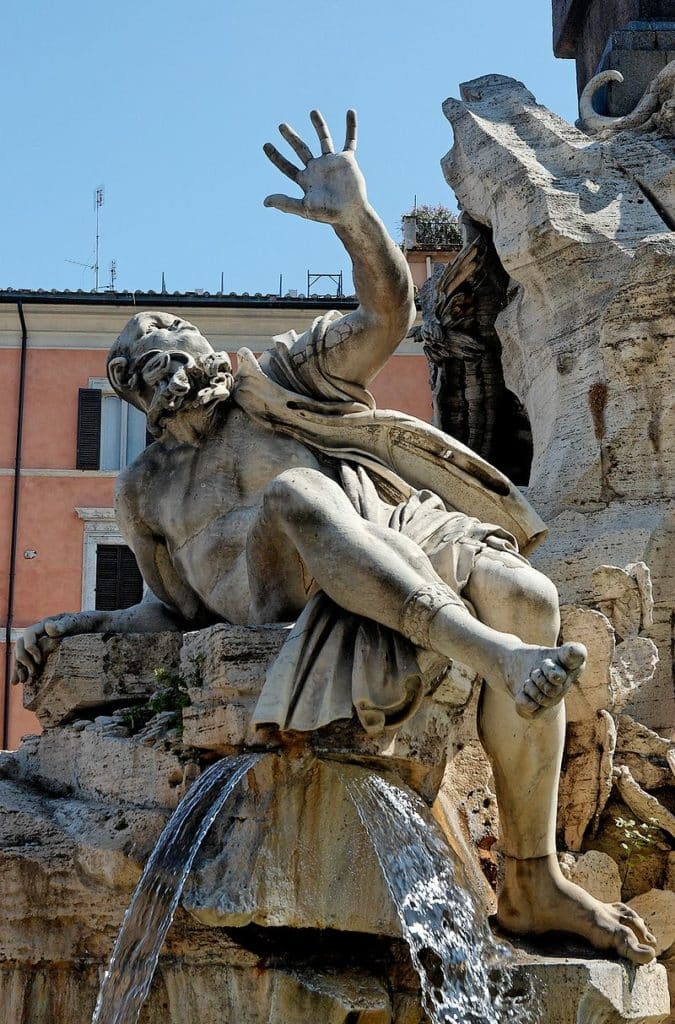
Seven animals are also depicted on the fountain, in addition to the bronze dove on top of the obelisk and the dolphins in the Pamphili coat of arms, scattered around the entire fountain, plus the plants that serve to define the composition. The more or less fantastic animals are: the lion, the armadillo, the land snake, the sea snake, the horse, the dolphin and the dragon.

The study of the model of the fountain, made by Bernini as for other works by him, shows that the artist initially imagined a work a little different from the one that later turned out. The dimensions and proportions of the various figures were smaller. The remains of coloring on the wooden model have led us to suppose that the intention was to make the various figures in bronze. But they were made with travertine.
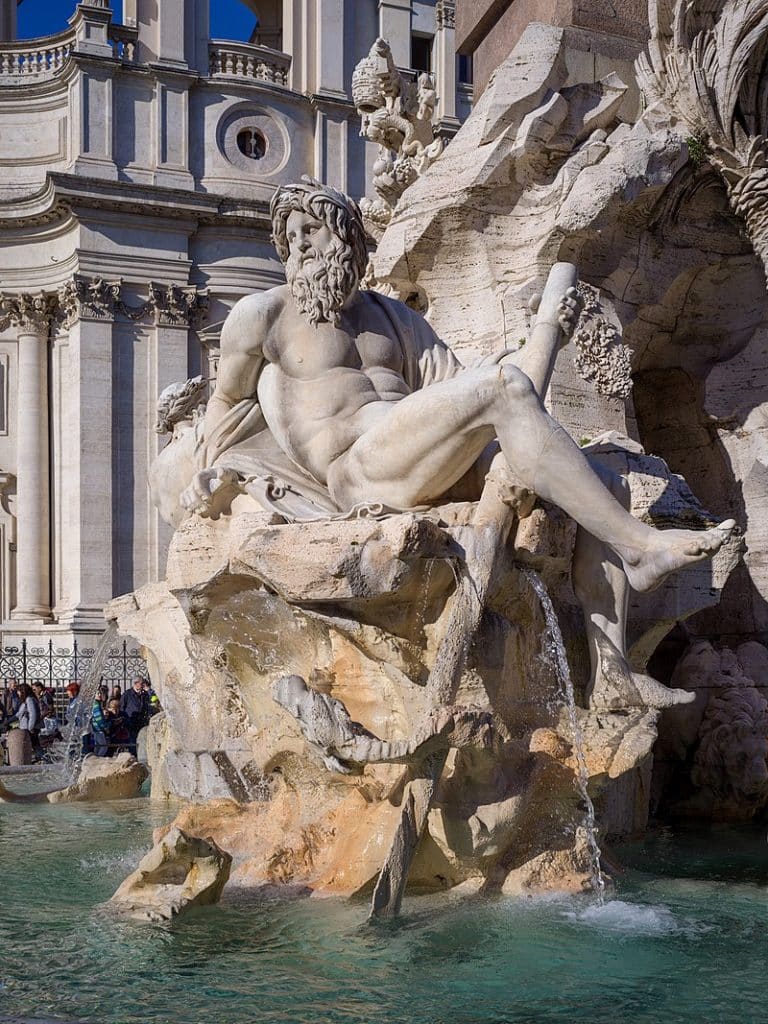
Piazza Navona also has two other fountains: the Fontana del Moro, sculpted by Giacomo della Porta and retouched by Bernini, located in the southern area of the square, and the Fontana del Nettuno (originally the Calderari fountain), located in the northern area. by Gregorio Zappalà and Antonio Della Bitta.
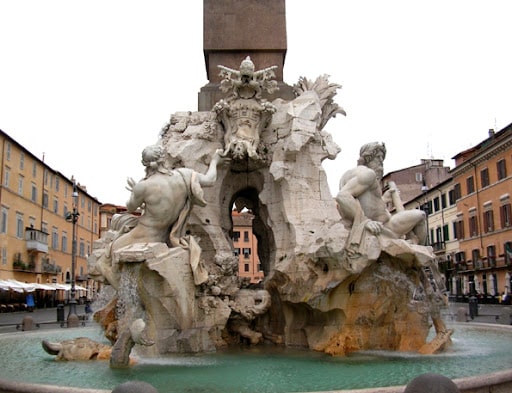
BOOK YOUR WALKING TOUR OF ROME or ask for Info.
